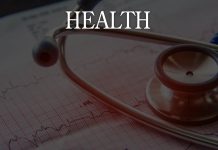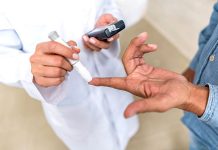By Meredith O’Brien
One of the many myths out there about eating disorders is that you call tell by looking at someone if they have one. You cannot tell if someone has an eating disorder by looking at them. A majority of people who have eating disorders may appear to be healthy, yet they are very ill. Unfortunately in our weight-obsessed culture we think someone needs to be emaciated to have any eating disorder. This is not true and this myth is very dangerous.
Eating disorders are life-threatening disorders. Causes of eating disorders reflect a complex combination of biopsychosocial factors including genetics, temperament, biology, lack of coping skills, trauma and sociocultural ideals. The most common precipitating factor is going on a diet. And for those who are genetically predisposed, dieting can be the catalyst to increased obsession with food and weight leading to destructive cycles.
There are different types of eating disorders: anorexia nervosa, bulimia nervosa, binge-eating disorder, avoidant restrictive food intake disorder (ARFID) and other specified eating or feeding disorder (OSFED). Typically with these disorders people have a strained relationship with food, an inaccurate perception of their bodies and, as it progresses, the eating disorder interferes with many aspects of their lives, including their health, relationships, work and school.
Over 30 million people of all ages and genders suffer from eating disorders in the United States. Every 62 minutes at least one person dies as a result of their eating disorder. Eating disorders have the highest mortality rate of any mental illness. Early detection has been reported to increase the chances of recovery and full recovery is possible.
Here are some of the signs and symptoms to look for in yourself or loved ones:
• Behaviors including restriction, bingeing, purging, over-exercise and laxative use.
• A preoccupation with body, weight and shape.
• Self-evaluation is unduly influenced by body, weight and shape
• Fluctuations of weight, both up and down.
• Fear of gaining weight.
• Develops food rituals (e.g. refusing to eat whole categories of food, excessive chewing, cutting food into small pieces and rearranges food on a plate).
• Complains of lethargy, cold intolerance and abdominal pain.
• Consistently makes excuses to avoid mealtimes or situations involving food.
• Drinks excessive amount of water and caffeine to suppress appetite.
• Visits the bathroom after meals to purge what they ate.
• Classifies food as “good” or “bad.”
• Chronically diets.
• Changes in exercise patterns.
• Rigidity in thoughts around food.
• Mood fluctuations (irritability, depression, anxiety and isolation).
• Difficulty concentrating.
• Dizziness, especially upon standing.
Recovery consists of physical, behavioral and psychological recovery. If you suspect that you or a loved one is struggling with an eating disorder please contact the NEDA helpline at 1-800-931-2237. For crisis situations, text “NEDA” to 741741 to be connected to a trained volunteer.
Meredith O’Brien is a licensed clinical social worker and a certified intuitive eating counselor. Meredith O’Brien & Affiliates, LLC, located in Red Bank, offers outpatient counseling. She writes about her personal recovery from anorexia in her blog recoveryfromanorexia.com.














